While a retargeting campaign is great to bring back website visitors, you’ll need prospecting campaigns to bring in new shoppers to your website.
What are prospecting ads?
Prospecting ads are ads targeted at bringing new potential customers to your website. There are 3 basic kinds of prospecting ads:
1) Open or Broad Prospecting: In these ads, you give Facebook broad parameters like country or location(s) – and maybe age and gender – and let Facebook optimize who it’s going to show your ads to. A frequently used strategy here is to set this up as a DABA (dynamic ad broad audience) campaign. This format combines a dynamic product ad with a catalog that has already run within your bottom-of-the-funnel retargeting ad so Facebook knows whom to show your ads to.
Pros: Facebook does have a lot of user data it can leverage to broaden your audience profitably. Typically, these ads work well if your ad account is already optimized.
Cons: There is a risk of spending your budget too quickly, and your own learnings do not grow since you rely on Facebook’s optimizations.
2) Interest or behavior-based prospecting: Here, advertisers use Facebook’s lists of interests and demographics to target their brand personas. For example, if you’re an organic skincare brand, you may target women in a particular age range that are buying from interests like ‘organic’ and/or ‘skincare’, but also target competing brands, and lifestyle choices such as Whole Foods, yoga, pilates, etc. The better your understanding of your brand persona, the better your targeting.
Pros: Using Facebook’s behavior targeting helps leverage Facebook’s own data to target your brand persona.
Cons: Experimenting is key, and can lead to significant spending before key learnings can be implemented.
3) Lookalike-based prospecting ads: Lookalike audiences use a ‘seed audience’ you already have, to tell Facebook to find you users that resemble these. Used well, these are a reliable way to prospect using your own data (order data. customer lists, subscriber lists, qualified pixel audiences, etc.). For example, you may use a seed audience with all your past purchasers, and create a 5% lookalike of it. Running this lookalike in a campaign would signal to Facebook to show your ads to the top 5% of users who resemble your seed audience at any given time.
These are usually created manually on Facebook using a customer list but can be automated through Socioh’s easy audience-creation tool.
Pros: Using your most qualified data to create seed audiences can lead to great results. TIP: We recommend using a 0-3% 0r 0-5% lookalike for your ads to avoid exhausting your audience too soon.
Cons: These are effective in stores that have a significant volume of data. Care must be taken to segment the source audience effectively, and avoid exhausting audiences – too narrow an audience will not reach many potential shoppers.
Prospecting Recommendations
Based on your shop’s order and pixel data, Socioh will suggest the best custom campaigns for you.
Take a look at our recommended campaign structure based on your ad spend.
Typically we recommend you start prospecting with the catalog-based DABA campaign and the Creative Tester campaign.
Catalog Creative(s) to Use:
You can use a number of creatives in your first prospecting campaign. Some suggestions to get started with are:
1. Full Shop Catalog with Lifestyle Images
2. Bestsellers or Bestselling Category Catalog
3. Rotating Brand-Values Catalog
4. 2-Image Catalog with Cut-Price, Offer, or Review
TIP: We recommend you use at least two catalogs and one single image and/or video format ad in your prospecting campaigns. Remember, testing is key when it comes to creatives (for both catalog designs and format).
